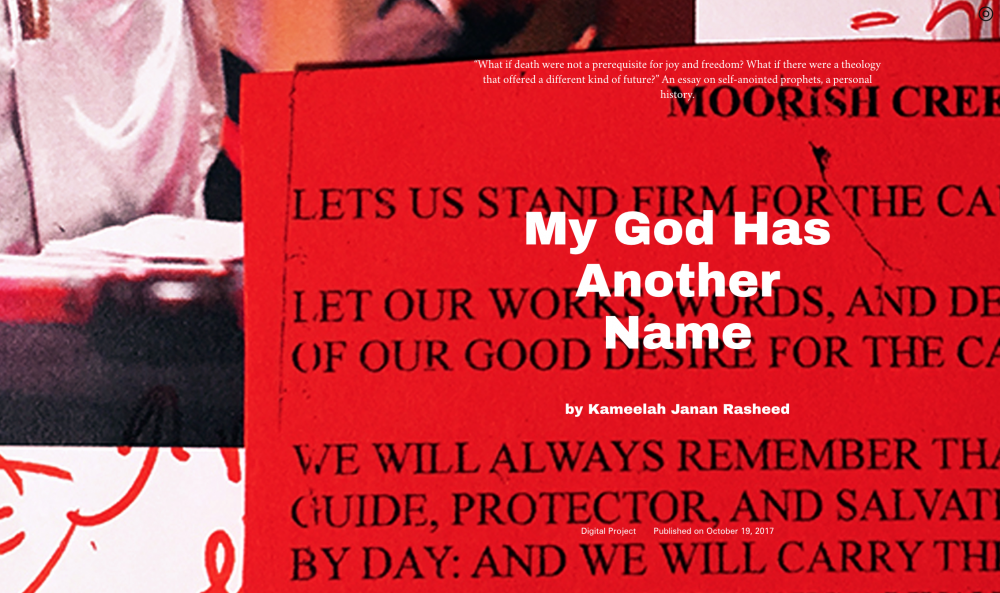In 2015, I was the recipient of a Triple Canopy commission held in partnership with NYPL Labs. Through this commission, I had the opportunity to engage materials in The New York Public Library’s holdings to create the digital publication, My God Has Another Name. An excerpt from the fall 2017 publication is below.
Triple Canopy - My God Has Another Name

It is August in New York City, and it is hot. The street preachers, stationed at crowded intersections and subway portals, seem to disregard the weather: They wear three-piece suits, ankle-length gowns, and layers of sweatshirts listing deadly sins. Some are combative and eagerly engage pedestrians, while others are meditative and patiently wait to draw an audience. An older black gentleman, dapper in a freshly pressed gray suit, stands at the entrance of the Union Square station with a sign that professes: “Sin is an amino acid cluster in the eye that prevents the absorption of God’s bright light.” A middle-aged Barbadian man on the back of the B44, headed into Bedford-Stuyvesant, joyfully delivers a rhyming sermon—“The gates of hell shall not prevail!”—as young kids pile on to the bus. Black Hebrew Israelites stalk the sidewalks of Harlem and, with increasing regularity, Brooklyn, dressed in robes, caftans, and fringed pants, which are liberally ornamented with the Star of David.
These preachers convert public space into pulpits, and hawk seemingly endless supplies of photocopied pamphlets and self-published books. Sometimes, with the help of microphones and handheld speakers, they barrage passersby with proclamations about the black man having descended from the ancient Israelites. They rhythmically shift between fast, faint murmurs and measured enunciation. They repeat God so as to create a reverberating, guttural tone, which competes with the noise of passing cars and halal food-cart vendors listing meat-and-rice combinations for tourists.
Roaming New York, I’m struck by the range of black religious doctrines on offer from these street preachers, which speaks to a common dissatisfaction with conventional creeds (and the churches that propagate them). But perhaps more curious is the desire of the preachers to make public their refusal of allegiance, and their drive to engineer and endorse new traditions.
Read the full essay here.